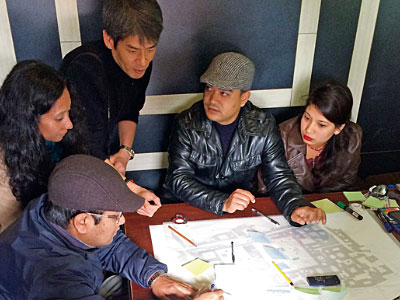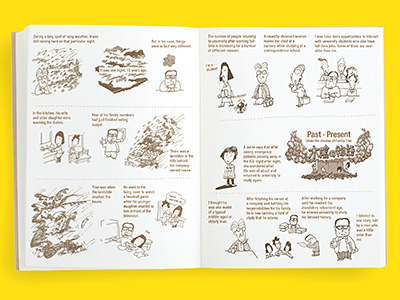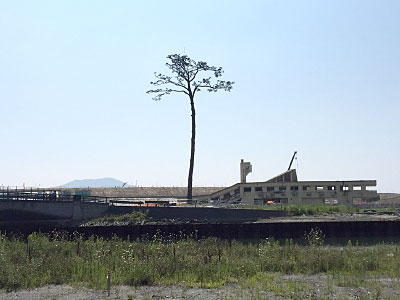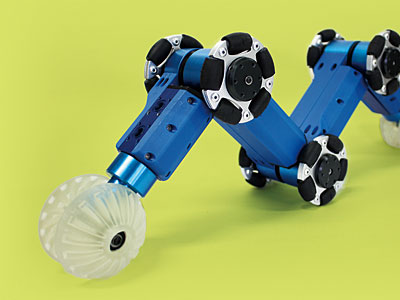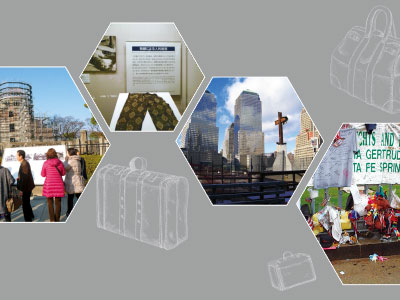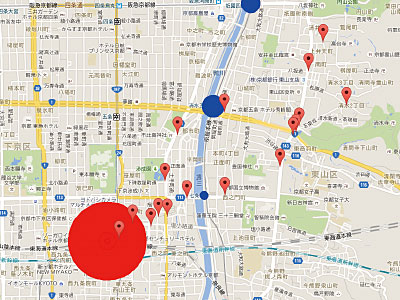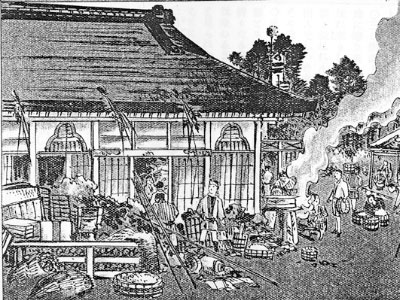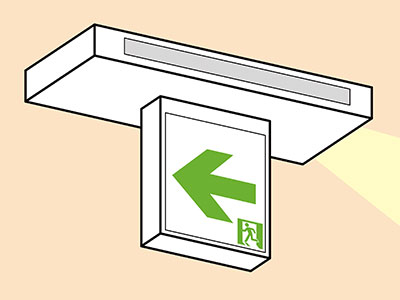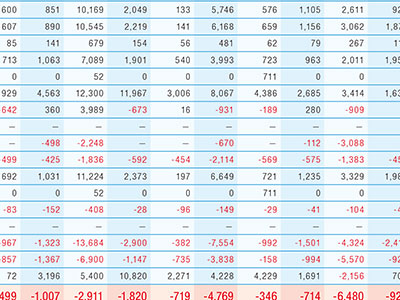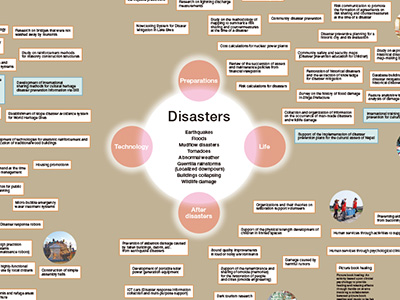STORY #1
Protecting historical city from disaster with cultural tradition and life
Takeyuki Okubo
Professor, College of Science and Engineering
Dowon Kim
Associate Professor, Kinugasa Research Organization
Lata Shakya
Visiting Researcher, Institute of Disaster Mitigation for Urban Cultural Heritage, Ritsumeikan University
JSPS Postdoctoral fellow, The University of Tokyo Graduate School of Engineering
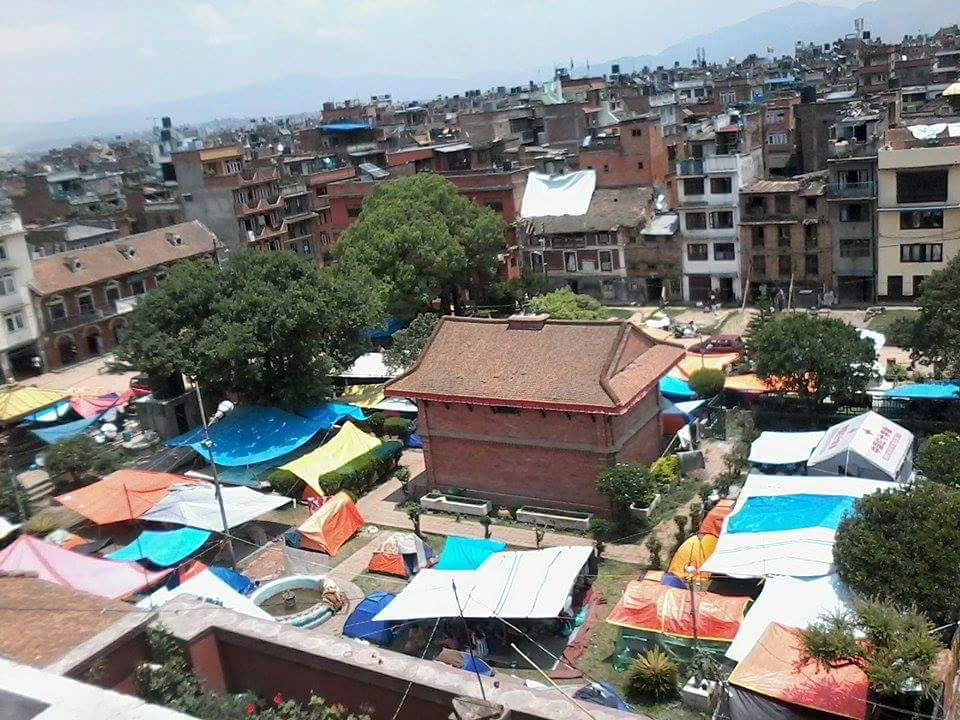
We’d like to suggest our vision for conserving cultural heritage “Build Back Better,” from disaster.
Okubo made contact with the residents of the district for interview introduced by Dr. Lata Shakya, Nepalese researcher who was doctoral student of Kyoto University at that time and held workshops to improve their awareness of disaster prevention. He also asked them for opinions so as to allow them to consider their own ideas for disaster mitigation that would be “Do themselves.” Large-scale renovation or reinforcement that forces the residents to incur substantial expense did not seem feasible. In contrast, he looked for solutions suitable for the residents, such as lectures on techniques for making resilient brick structure using available means, along with the regular cleanup of objects from paths and courtyards to secure evacuation routes in case of disaster. In addition, he toured the district with residents, let them discover areas of danger through disaster drills, and considered how to use common and traditional water facilities in courtyards, with the aim of letting the residents consider their own ideas regarding disaster mitigation. After Shakya joined Ritsumeikan Univ. as senior researcher in 2013, the workshop with residents has been going more smoothly that the disaster mitigation map is realized based on information and the residents’ opinions which were gathered through the methods described above. However, Shakya is visiting researcher from 2014, she is cooperating Okubo as a team member as before.
“A bright spot in this tragedy was that there was neither a casualty nor a completely destroyed building in the district in question. It was too late to hand over the map, but I think that such a favorable result was thanks to the residents’ firm awareness of disaster mitigation,” Okubo summarized.
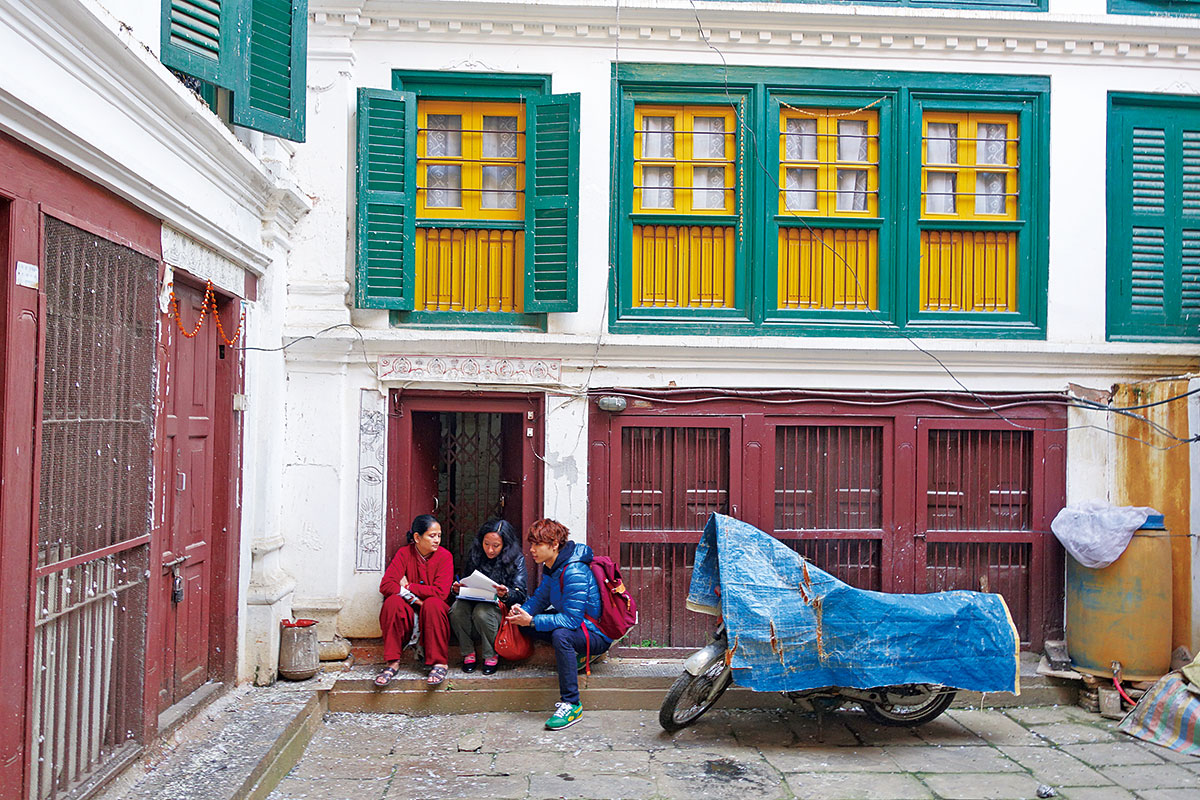
Patan is a UNESCO World Heritage Site. Including its courtyards and squares, it is considered to be very important, due its artistic and cultural characteristics. The courtyards also serve as locations for essential infrastructure, such as for water access and for social activity (picture at left). The pictures at right and at the bottom show the researchers conducting interviews with the families living in the houses facing the courtyard regarding their experience of evacuation during the earthquake and their lives as refugees.
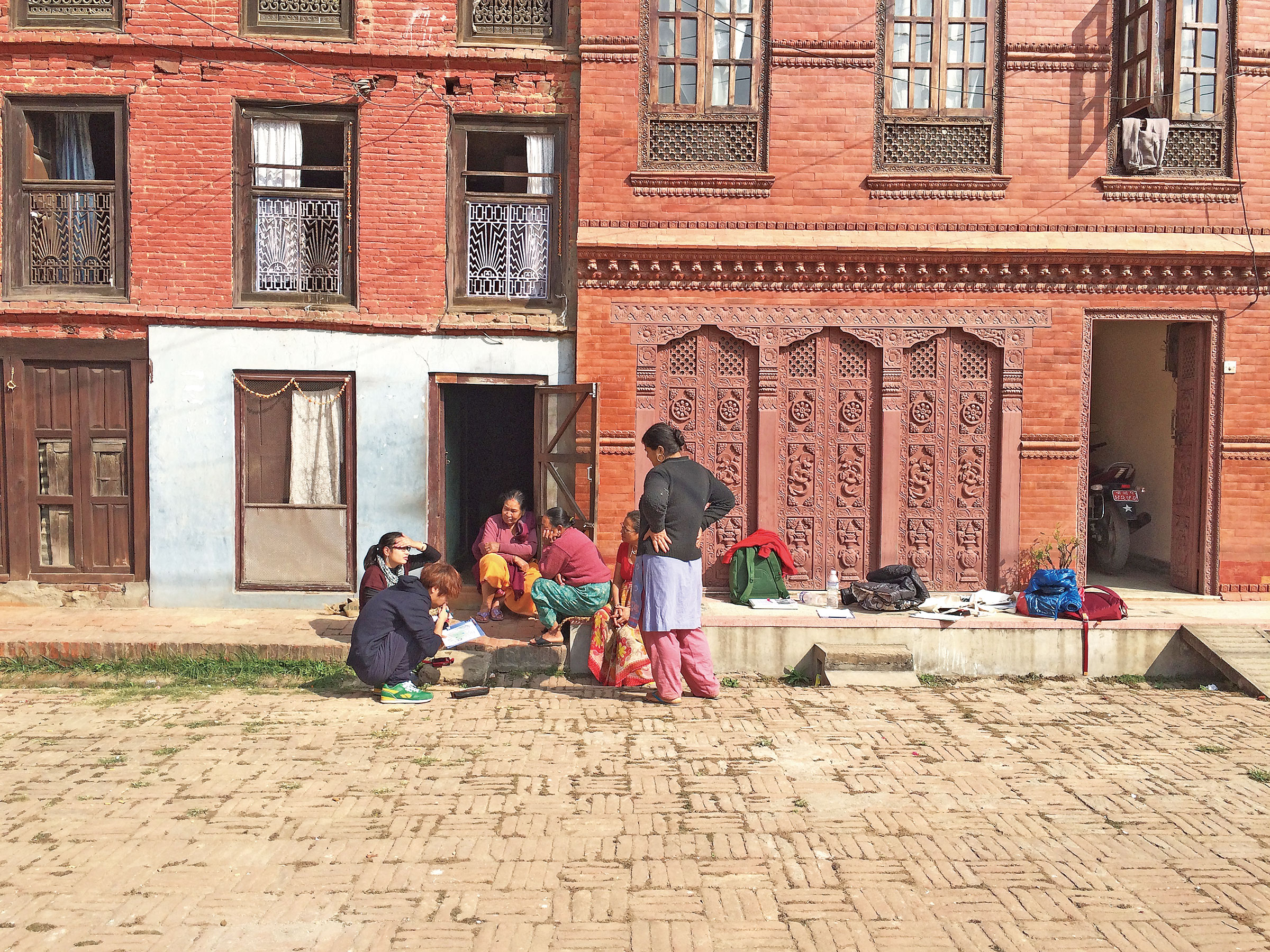
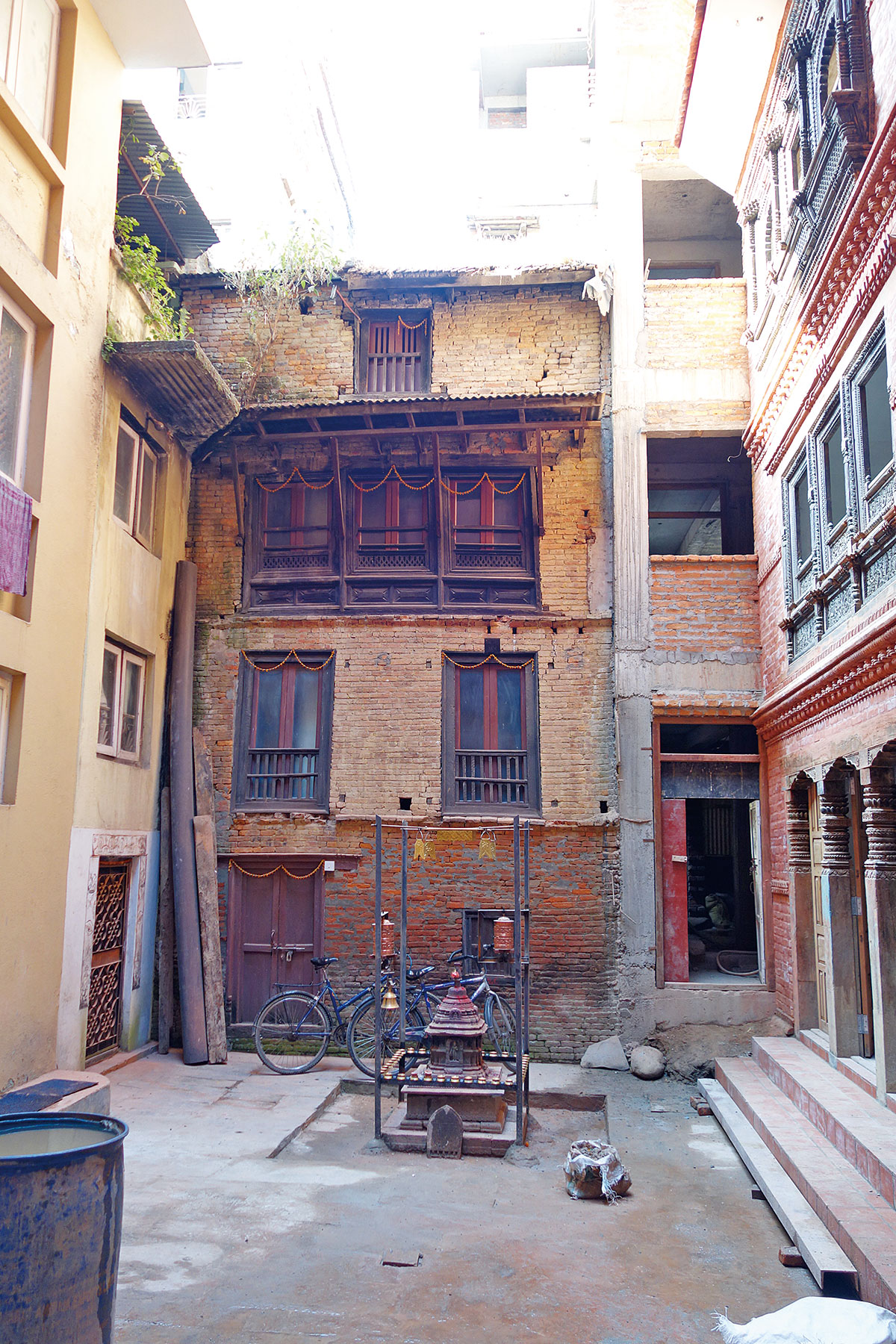
"Now as right after the earthquake is a good opportunity to prepare for the next disaster, as awareness regarding disaster mitigation has never been higher.” Okubo soon traveled in Nepal to continue his surveys.
Another surveyors, Shakya and Dowon Kim with a graduate student and local contributors, interviewed nearly 60 people in Patan to discover through which courtyards or paths they escaped, where they were living as refugees, how much the earthquake has impacted their lives up to now, and when they were able to restart regular life to the same degree before the earthquake. Kim reported, “As expected, these interviews prove that courtyards and narrow paths as traditional semi-public spaces are effective for refugee sites and for places that support refugee life. However, some residents had abandoned their former residences and left the district, and thus there are now many vacant residences. As a result, some courtyards and paths, available before the earthquake, are now closed.”
Formerly involved in cultural property protection in South Korea, for Dowon Kim, study at Ritsumeikan University caused him to become keenly aware of the value of cultural assets that people build over the course of their lives. That made him considers how to engage in “protection with use.” He is continuing to survey and conduct research in the Patan region, in order to develop and offer programs that help local people to protect their historical townscapes and buildings from disasters.
“The important point is: ‘Build Back Better’ (i.e., ‘reconstructing a society to be better than before an earthquake’). Now is the time for us to provide a vision for achieving this.” Okubo and Kim are devoting themselves to this study.
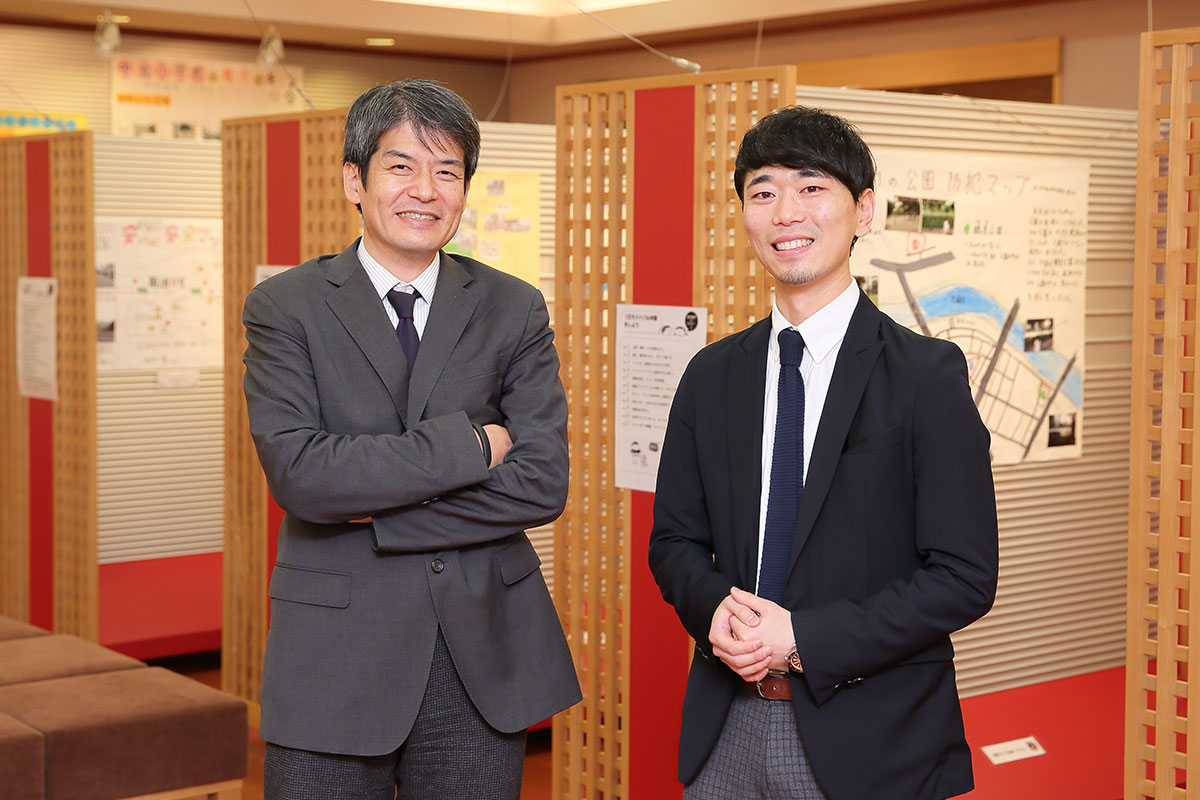
Takeyuki Okubo [Left]
Professor, College of Science and Engineering
Subject of research: Disaster Management Planning with Traditional Measures for Disaster Risk Mitigation in History, Design of Disaster Prevention Facilities for Preservation, Conservation and/or Production of Cultural Environment
Research keywords: Cultural heritage science, natural disaster science, civil engineering project/traffic engineering, town planning/architectural planning
Dowon Kim [Right]
Associate Professor, Kinugasa Research Organization
Subject of research: Strategy of District Disaster Mitigation Hub for Cultural Heritage, in Order to Protect Cultural Properties and Districts, Methods for Devising Disaster Mitigation Plans Based on Citizen Awareness and on an Evaluation of Disaster Prevention
Research keywords: Cultural heritage science/museology, natural disasters/disaster prevention science, civil engineering project/traffic engineering, architectural environment/equipment, town planning/architectural planning
